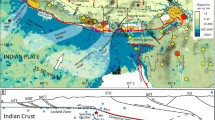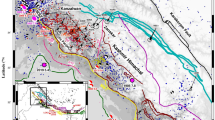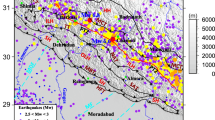Abstract
THE discovery of graptolites near the village of Harpatnar in the Anantnag District of Kashmir1 was of considerable interest to geologists studying the history of the Himalayas, because the apparent absence of graptolites from the Himalayas had long been the subject of considerable debate and speculation. The graptolites (described in ref. 2) indicate a Ludlow (Late Silurian) age for the Harpatnar Beds from which they were collected2.
This is a preview of subscription content, access via your institution
Access options
Subscribe to this journal
Receive 51 print issues and online access
$199.00 per year
only $3.90 per issue
Buy this article
- Purchase on SpringerLink
- Instant access to full article PDF
Prices may be subject to local taxes which are calculated during checkout
Similar content being viewed by others
References
Sahni, M. R., and Gupta, V. J., Nature, 201, 385 (1964).
Berry, W. B. N., and Gupta, V. J., J. Paleont., 40, 1338 (1966).
Gupta, V. J., and Denison, R. H., Nature, 211, 177 (1966).
Gupta, V. J., Rhodes, F. H. T., and Austin, R. L., Nature, 216, 468 (1967).
Author information
Authors and Affiliations
Rights and permissions
About this article
Cite this article
BERRY, W., GUPTA, V. Ordovician Graptolites from the Kashmir Himalayas. Nature 216, 1097 (1967). https://doi.org/10.1038/2161097a0
Received:
Published:
Issue date:
DOI: https://doi.org/10.1038/2161097a0



